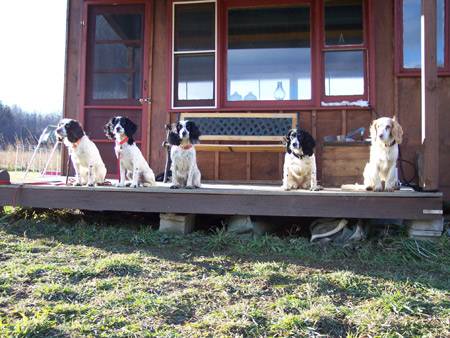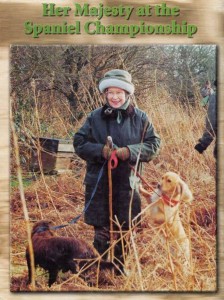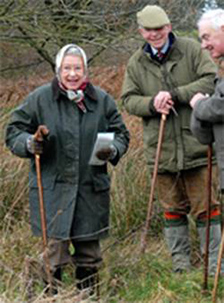Puppy Training 101

Behaviorists say that the first sixteen to twenty weeks of a puppy’s life is when it is the most receptive to learning. During this time frame the pup also seems to retain knowledge better than at any other time in his life.
While the most accepted training philosophy is based on letting a pup be a ‘pup’ for the first six months of it’s life, we are missing out on a valuable time frame. The important factor to keep in mind during this formidable time is that the pup can do no wrong. There is no negative, only positive. Pup will soon learn that by producing the right behavior, it can generate a beneficial consequence or reward.
Over the last few years we have become strong advocates of clicker training. There are trainers that laugh at clicker training, yet understand how the electric collar works. Actually, both the clicker and the electric collar work on similar principles.
The clicker is a positive reinforcer, the e-collar a negative reinforcer. They both help shape behavior. Why use a clicker? Isn’t praise good enough? The clicker has a distinct sound and is quick to use. It is also neutral and unaffected by your emotions. It marks the behavior you are trying to shape. Though praise is a great way to relate to your dog it doesn’t always communicate information properly.
Two facts to keep in mind about training are the importance of timing and consistency. Whether it is a reward or a correction, it must always be closely related to the act.
First you need to condition the dog that the click means a reward will follow. It’s click and treat. I use soft treats such as string cheese, hot dog or pounce cat treats. The dog does not waste time chewing and you get his attention back much quicker. Keep your treats small, maybe the size of your fingernail or smaller. Now you just click and treat, do several repetitions. If you don’t want to use a clicker, you can use a word like ‘yes’ and then treat. Try to deliver the food right after your click or ‘bridge’ word. Some trainers actually put the small pieces of hot dog in their mouth. Bait bags also work well. You need to deliver the reward as close to the click as possible.
Two very important facts about the clicker, the food always follows the click, and the click ends the behavior.
The clicker is great working with puppies. It will ensure the use of positive training, and keeps training fun for pup and trainer. We can’t say that we use the clicker for all of our training, but we start pups out learning this way and have had great success.
We also have used the clicker with older dogs to work through problems such as retrieving. Shaping a retrieve with the clicker is definitely less stressful on both the trainer and the dog than is force breaking.
If there is one command we feel is the cornerstone of spaniel training it is the sit or hup command. It is the basis of steadying and directional retrieving. With very young pups we do some play retrieving, teasing the pup with a soft toy or bumper and throwing it for them to retrieve. Encourage pup back to you, letting him hold the toy for a bit before taking it from him.
As soon as we have the pup sitting, it will never make a retrieve unless it is from a sitting position. Remember that this is the basis behind steadying. At no time in the life of a finished spaniel will he make a retrieve unless it is from the sitting position. So establish this picture early in pup’s life and it will minimize future steadying problems.
Most readers probably have dogs that already are sitting. What you need to work on is getting an instant response to verbal and whistle commands. This is called fluency. What we are doing is conditioning the dog to a quick response.
Level One – New Pup
Step 1) Condition pup to the clicker. Just click and treat several times.
Step 2) With a small piece of bait in your hand (try to hold the food between your thumb and palm) lure the pup into a sitting position by bringing the food back over his head so he will start to sit. Just before his butt hits the floor, click and treat. Do not say anything, don’t tell the pup hup or sit. That will be added after the dog is sitting quickly to the raised hand over his head. If you have a problem with the dog backing up to follow your hand movement instead of sitting, work the dog close to a wall. Later you can just hold your hand up and pup will sit on its own. When the pup is offering the sit behavior quickly with the raised hand as a cue, then add the word ‘sit’ or ‘hup’. You only add the verbal to the behavior once it is performed accurately. You want the verbal command to be directly associated to the correct behavior. You don’t want to keep saying ‘sit’ while the pup is still hopping around. Keep the session short, maybe only three or four repetitions. Work short sessions several times a day.
Remember, we are working for a quick response to the sit command. We are not looking to increase the length of the sit at this point. When pup is responding quickly to the hand signal and verbal command, start to incorporate the whistle. One quick toot of the whistle is your hup command.
Remember that the click ends the behavior? When you are getting a nice quick response to the sit command, start to lengthen the time pup sits before the click and treat. At first it might only be to the count of two before your click, but the dog will learn that the exercise does not end until the click. Reinforce by repeating the hup command. Keep increasing the length gradually before you click and release. The pup will learn that the click is the release. You can also start to add a release word with the click like ‘OK’. At this point you can start to phase out the click and just use the release word before you treat. Do not stop the food reward.
We have had ten week old pups stay with their food dish at their feet and not eat until released with a click and O.K. command.
Recall
Step 1)Stand with the bait again held in the palm of your hand, only this time your palm is out and down at your side.
Call the pup to you with a ‘come’ or ‘here’ command. Just as he reaches you, click and treat. You want your hand to become a target to come in to. Later when you dog is retrieving it will help to bring the bird to hand.
Again work on a quick response to the ‘come’ command. Make a game of recall by calling pup back and forth between two people. Both players need to treat the pup before the other calls him back. This is called a recall relay. When you work alone, wait until pup is distracted and then call him again to come to hand with a click and treat. Continue to feed when he comes in. Later add the hup command after he comes, then treat and release.
Now start adding the whistle, with the verbal commands. Again phase out the clicker but not the food reward. You can vary the times you give the treat. Make the pup come in a couple of times before you treat. Maybe start to treat every other time. Randomize so that the pup is never sure when the reward will come.
Level 2 – Older Pups
Use this method of yard work to increase fluency. Try to develop a quick response to your hup and recall.
If you have started retrieving, make sure to hup the dog to the whistle, then quickly release with a thrown bumper and the fetch command. The bumper now becomes the reward. From this point on the dog will only retrieve from the sit position. Don’t work on stays yet, only establish the retrieve from the sit position. Always add the fetch command as you throw the bumper. You want the release to be your idea. At this point we are just trying to establish drive and enthusiasm.
Keep all training free of distractions. Train in your yard, living room or basement. You want to have the pup’s full attention.
Next month we will work on retrieving and steadiness exercises. To learn more about clicker training, we recommend Karen Pryor’s book ‘Don’t Shoot the Dog’. This book and other training books can be ordered through Dogwise.com or by phoning them at 1-800-776-2665. Clickers are sold at Petco, Petsmart and other pet shops.
PROFILE: Bruce McClarin & Debbie Curtice
Bruce McClarin has been involved with the sport of dogs for over forty years. His first dog was a coonhound that he trained to hunt rabbits; later he bred and showed Shetland Sheepdogs. He has competed and titled his dogs in obedience, agility, flyball and herding events. Currently Bruce is breeding and training field-bred English Cockers for field trials and hunt tests. An accomplished sporting clays shooter, Bruce also enjoys hunting and shooting over his spaniels.
Debbie Curtice has been training dogs for seventeen years. She has been in obedience competitions in the U.S. and Canada, and titled her American Cockers in both countries. Debbie has taught obedience and agility in group classes as well as in private one-on-one sessions. She has been trialing field bred English Cockers for the past few years and, along with Bruce McClarin, co-owns Windsor Beach Cockers.
Debbie enjoys shooting Sporting Clays and also has shot pheasants, chukar, quail, grouse and woodcock over the cockers she has trained.



